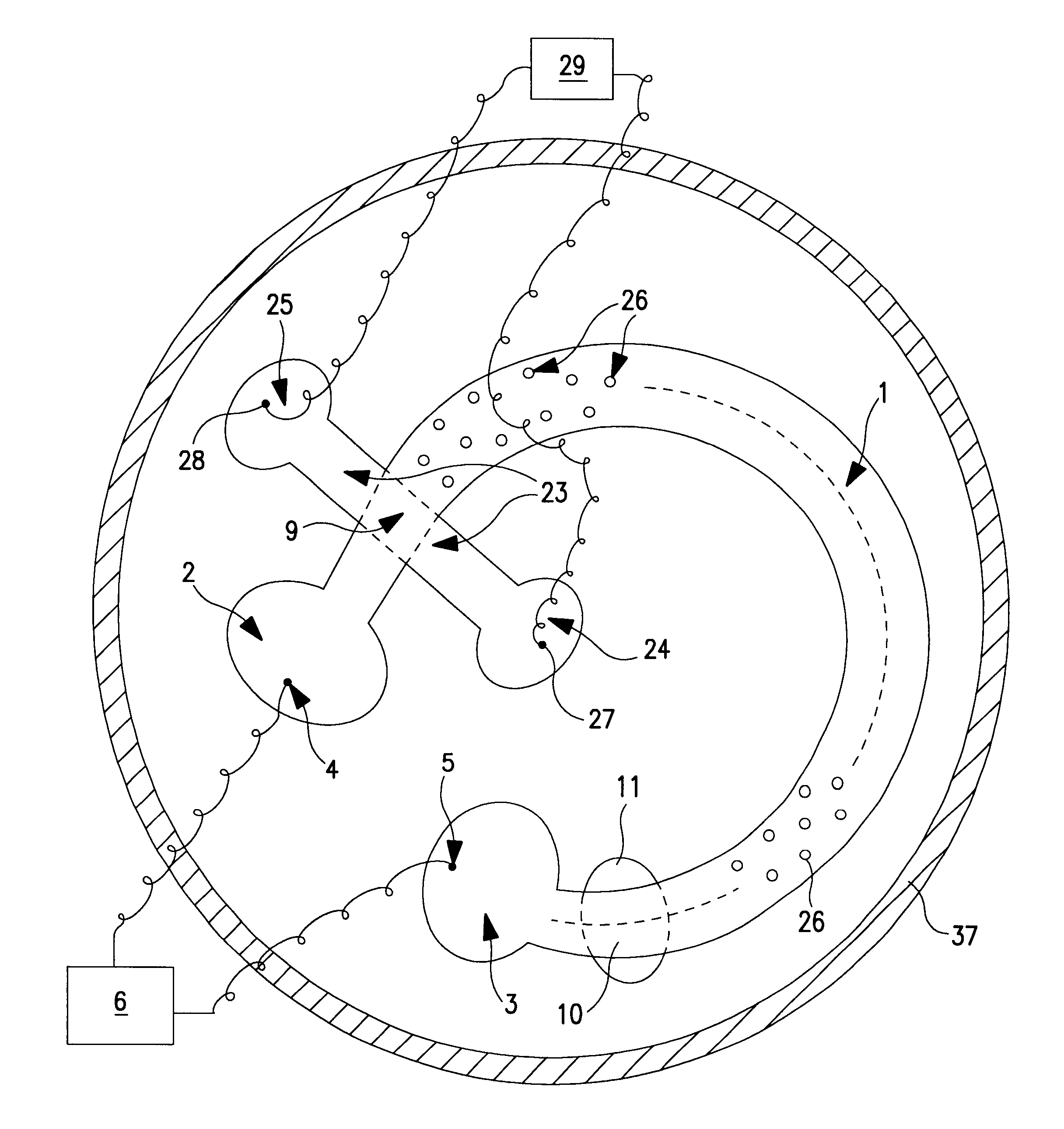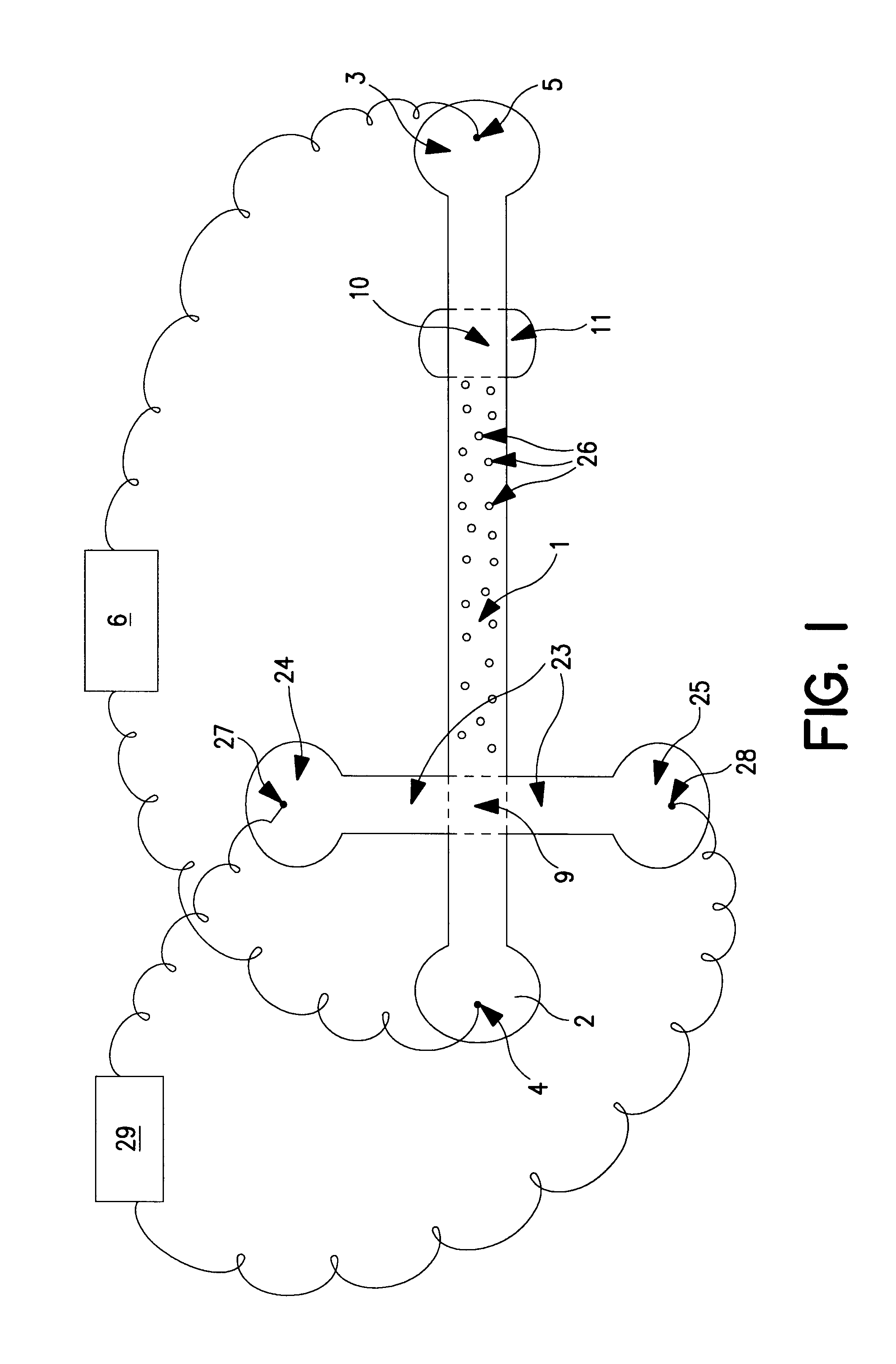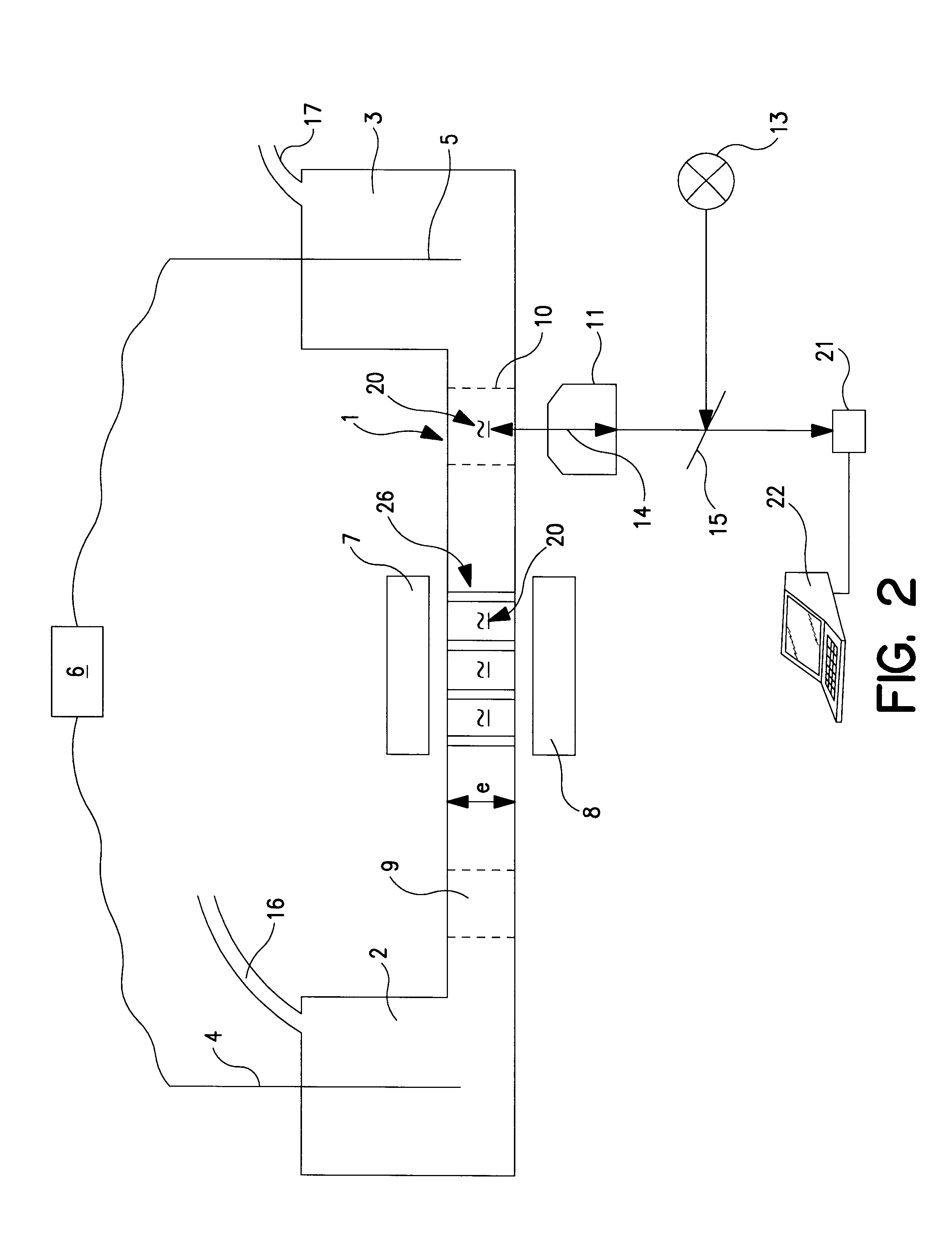Method and device for separating particles or molecules by migration through a ferrofluid
- Summary
- Abstract
- Description
- Claims
- Application Information
AI Technical Summary
Benefits of technology
Problems solved by technology
Method used
Image
Examples
Embodiment Construction
Preparation of the Ferrofluid Emulsion
The emulsion is prepared using the procedure published by J. Bibette in J. Magn and Magn. Mat. v. 122, p 37 (1993) and J. Coll. and Int. Sci v. 147, p 474 (1991). In short, the emulsion is obtained under shear in a grinder from a 50% (w / w) water-SDS solution, into which a solution of ferrofluids from Rhone Poulenc containing 20 nm FE.sub.2 O.sub.3 [sic] grains in an oil / Fe.sub.2 O.sub.3 ratio of 50% (w / w) is progressively incorporated, until reaching a final oil / water ratio of 80% (w / w). This solution is diluted ten times in water. The ferrofluid drops are then sedimented under a magnetic field, the supernatant is taken off and the ferrofluid emulsion is re-suspended in a 0.05% (w / w) solution of Tergitol type NP10 (Sigma) / water. This rinsing operation is repeated four times. The result is a ferrofluid emulsion having an oil / water interface with negligible surface electric charge. Before electrophoresis, this emulsion is supplemented by a TBE buf...
PUM
| Property | Measurement | Unit |
|---|---|---|
| Thickness | aaaaa | aaaaa |
| Thickness | aaaaa | aaaaa |
| Force | aaaaa | aaaaa |
Abstract
Description
Claims
Application Information
 Login to View More
Login to View More - Generate Ideas
- Intellectual Property
- Life Sciences
- Materials
- Tech Scout
- Unparalleled Data Quality
- Higher Quality Content
- 60% Fewer Hallucinations
Browse by: Latest US Patents, China's latest patents, Technical Efficacy Thesaurus, Application Domain, Technology Topic, Popular Technical Reports.
© 2025 PatSnap. All rights reserved.Legal|Privacy policy|Modern Slavery Act Transparency Statement|Sitemap|About US| Contact US: help@patsnap.com



